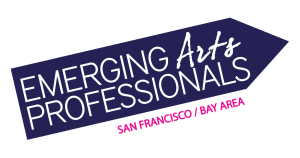Cultural Stewardship (from the San Francisco Ballet to Big Freedia)
“Katrina played a big part in spreading bounce… We were displaced all over the world. People were trying to find bounce music like it was a drug.” ~ Big Freedia (on Late Night with Carson Daly)
I was introduced to Big Freedia – a transgender star of New Orleans’ bounce music who has a hit song entitled “Azz Everywhere” – last year via Namane Mohlabane and the New Parish. In that one concert, it felt like all my worlds – Southeast college parties, Brooklyn dancehall sound systems, and gender-fluid Oakland – had collided and settled comfortably around me. I can only imagine what it would have felt like if I had been one of the hundreds who had come to the Bay Area from New Orleans. The rapid tempo, the booty-shakin’ bass, the gritty, insistent call and response could very well have sounded like “home.”
One day I found myself inputting plans in my Google Calendar for an evening out. San Francisco Ballet at the War Memorial Opera House at 8pm… Big Freedia at Public Works at 11. In that moment, it saddened me to think that while the San Francisco Ballet has multiple tiers of support, is touted as one of the city’s gems, and will probably live on for another 73 years, the event at Public Works is only one of Big Freedia’s many solo shows in a packed schedule. She performs up to six nights a week, working the music circuit from nightclubs in New Orleans to SXSW, attempting to bank on a “trend” that’s just reaching cult status after 20 years.
Who will be cultural stewards for Big Freedia and bounce music? Can we get the hipsters that dive into the safe space of “shaking for Big Freedia” to also support the post-Katrina communities that remain dispersed throughout the U.S.? Can we get urban Black communities to embrace “Big Freedia, the Queen Diva” AND move towards accepting the LGBTQ community as a whole? In the attention deficit world of “click, click, done” via Kickstarter campaigns how do you get someone who buys one ticket to one concert to understand the effects they could have on a subculture?
Sometimes you have to start where you are, build relationships, and hope the significance sinks in.
In the dance world, intimate artist-audience conversations are too often a “benefit” reserved for high-level donors. When I created the DANCEfirst! salons at the Museum of the African Diaspora, attendees jumped right in, taking in performance, asking the hard questions after, and coming back the next month. In the push for empowered citizens of culture, I am inspired by local institutions who are making the move to deepen relationships. YBCA’s Big Idea Nights earned it a reputation as “that museum that throws really good parties.” Oakland Museum’sOakland Standard gets me out almost every First Friday for the eclectic, socially-responsive activities that celebrate local community.
If we look at engagement alone, cultural stewardship is evolving. We are a DIY, participatory culture – we curate our own shows and raise our own funds. Now we just need to be consistent. See ourselves as “supporters” and not just “consumers”. The difference is what will ensure that the art we value, that speaks to our multiple voices, continues to receive the support it needs to be heard.
##
Eboni Senai Hawkins is the Producing Artistic Director of see. think. dance.
After valuable experiences in arts administration (Jacob’s Pillow Dance, Yerba Buena Center for the Arts,Alonzo King’s LINES Ballet), she took a leap of faith and started working directly with the art and artists she loved.
Inspired by the opportunity to present intimate performance in a low-pressure environment, Eboni curated a short program for the June 2007 Mission Arts Performance Project (MAPP) hosted by the Red Poppy Art House, featuring dancers Antoine Hunter and Rashad Pridgen.
The response from the primarily visual arts/music audience was overwhelming and in collaboration with Todd Brown and the Red Poppy’s Street-Level Curating Program, Eboni established see. think. dance. to produceTruth + Beauty (November 2007), Word. Warrior. Music. Movement. (March 2008), and Urban Art Sessions(May 2008).
May 2008 also marked the formation of and the first performative installment by The Intimacy Project, an ongoing collaboration between artists/educators who draw creative inspiration from their connection to the African continent and are deeply invested in social change through the re-integration of the mind and the body. Losing a dancer at the last moment and concerned with the flow of the evening’s program, Eboni overcame her fear of the stage to perform a duet with actor Kwesi Hutchful, a movement composition incorporating media installation, tempest tossed by lauren woods and layered with a recorded version of Intro to Kemetic Science by David Boyce.
In 2010, heavily influenced by the REVIVE workshop, Eboni created the annual REflect film series as part of the Black Choreographers’ Festival: Here and Now. Subtitled “The Black Dancing Body on Film”, REflect mines the rich visual history of Black dancers and choreographers on film through a dynamic selection of documentaries, feature films, and shorts.
Don’t miss Reframing the Arts : Advocating for the Public Culture at Oakland Museum of California (OMCA) on Saturday, April 16! Register here.



Thank you starting a conversation about the sustainability of our art, and building its rightful value. and Big Freedia is AWESOME!!
Richard –
You’re welcome. Will be reaching out soon, re: sustainable support for the artists we both love.
Thank you Eboni for highlighting Oakland's treasures and African-American culture.
good post!
This is quite different from what I’ve recently read. It’s not complete but interesting I wish you could fill in some more details. Thanks for giving me a good time reading this.